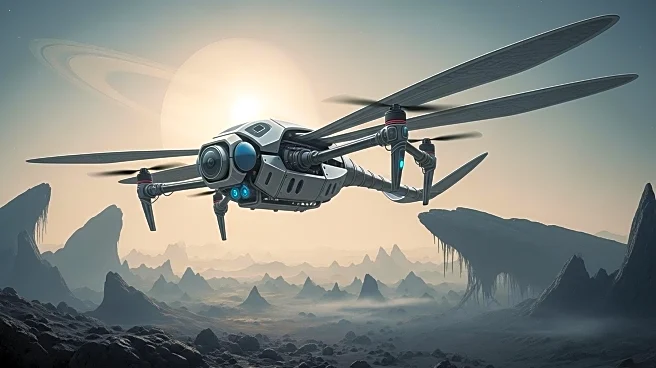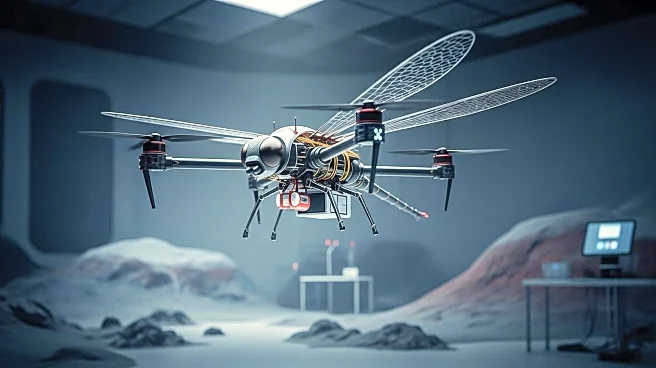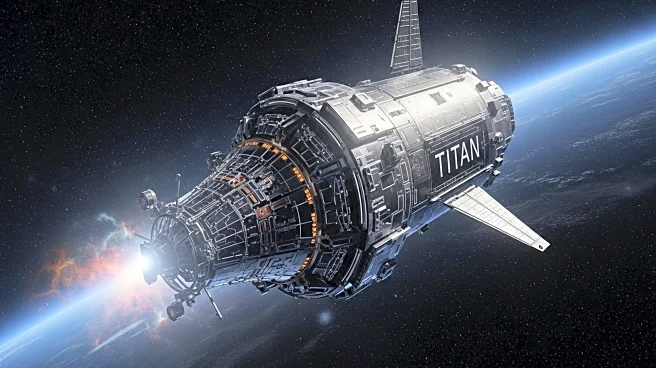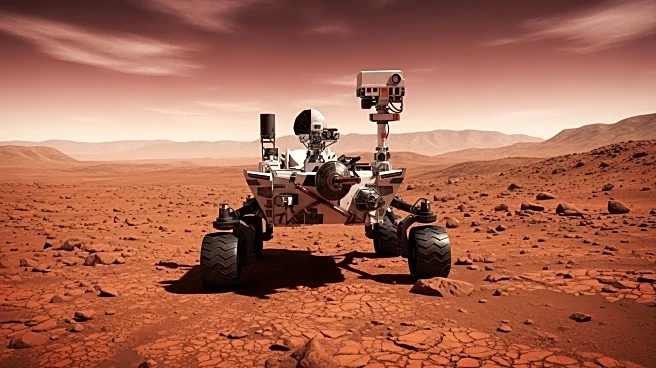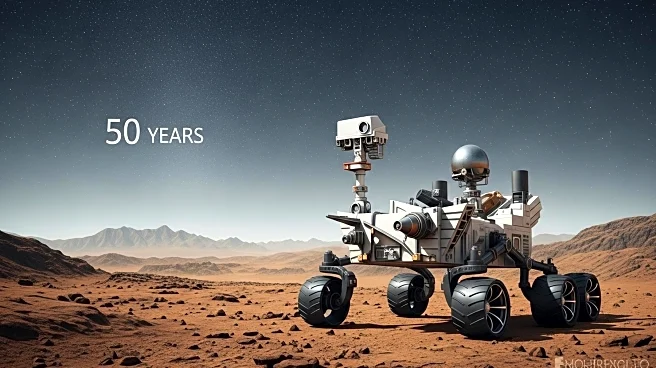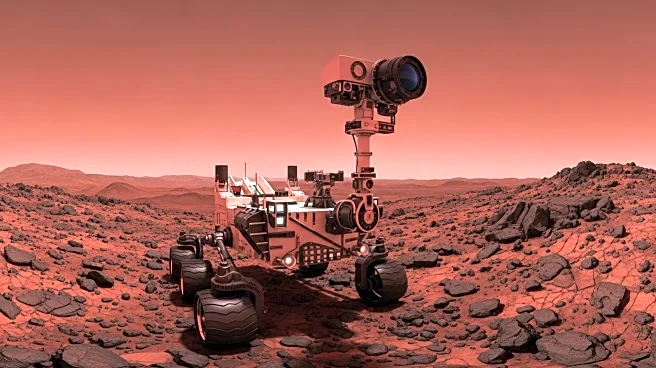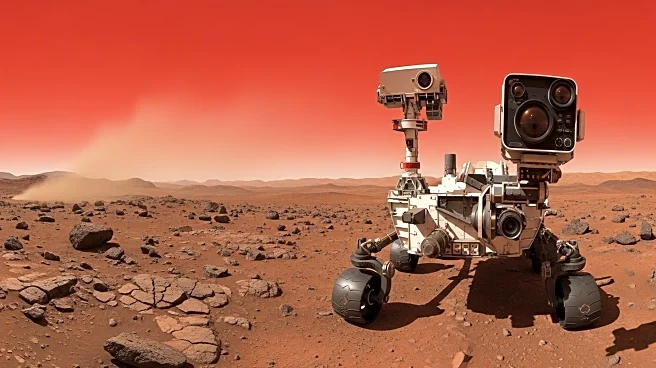What's Happening?
NASA's Dragonfly mission, a nuclear-powered rotorcraft designed to explore Titan, has successfully completed key tests to remain on schedule for its July 2028 launch. The rotorcraft, developed by Johns Hopkins Applied Physics Laboratory, will study Titan's habitability and identify landing sites. Recent tests focused on aerodynamic analyses, structural and thermal durability, and the performance of the rotor system in Titan's thick atmosphere. Lockheed Martin conducted tests on the flight aeroshell, ensuring it can withstand extreme conditions during entry. The mission is set to move to the integration and test phase in January 2026.
Why It's Important?
The Dragonfly mission represents a significant advancement in planetary exploration, offering insights into Titan's environment and potential for life. Successful testing is crucial for maintaining the mission's timeline and ensuring the rotorcraft's readiness for its complex objectives. The mission's progress underscores the collaboration between NASA and private industry, highlighting the role of advanced technology in space exploration. The findings could influence future missions and contribute to scientific knowledge about extraterrestrial habitability.
What's Next?
With testing completed, the Dragonfly mission will proceed to the integration and test phase, preparing for its launch in 2028. NASA and its partners will continue to refine the rotorcraft's systems and conduct further tests to ensure mission success. The scientific community and space enthusiasts will be monitoring developments closely, anticipating the mission's contributions to our understanding of Titan and its potential for life.


